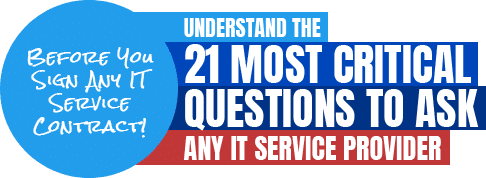
According to Cybersecurity Exchange, a whopping 33 billion accounts will be breached in 2023!
These statistics showcase the escalating prevalence and sophistication of cyber attacks, bringing many businesses to their knees.
To add salt to injury, another annual report from Cybercrime Magazine estimates that businesses globally will lose over 10 trillion dollars annually by 2025 due to cybercrime!
While setting up firewalls and strong passwords are a few ways to guard your business against such attacks, they are no longer adequate strategies to keep hackers at bay.
This is where the Zero Trust cybersecurity model comes in!
As its name suggests, Zero Trust is a cybersecurity practice that considers every user, device, or activity a potential threat. It emphasizes the need for verification at every endpoint and limits user access depending on their roles, offering advanced network protection.
Let’s delve into the specifics.
3 Steps in Zero Trust Cybersecurity
To fully take advantage of the Zero Trust cybersecurity strategy, three things must remain top of mind:
Continuous Verification
Gone are the days when verification was only required during login. With hackers taking advantage of cutting-edge technologies to gain access to critical business information, continuously authenticating devices, programs, and users is vital.
This policy throws transitive trust out of the window and sees to it that system users prove they are who they say they are. It also applies to devices and is an excellent plan that strictly promotes authorized access. The system will check risks at every end-point, quickly catching a change in device or user behavior and taking the necessary action.
That way, businesses enjoy strengthened cybersecurity, appropriately protecting their infrastructure, systems, and networks.
Limited Access
A significant number of cyber breaches stem from cyber criminals taking advantage of a user’s privileged access. To minimize the chances of that happening, it’s vital that enterprises offer access to systems, devices, and networks based on a user’s roles and duties.
To do this, the entrepreneurs and management team should limit access to the resources a user needs to do their work.
Some common approaches to limiting accessibility include;
- Segmented application access (SAA): It involves permitting various programs for users and restricting network access by malicious users.
- Principle of least privilege (PoLP); devices, applications, and users get the basic access level to network resources according to their job description.
- Just-in-time access (JIT): It offers a specified time for programs, devices, and users to access systems.
Proactive Verification
Zero trust assumes a threat even before it happens and, as a result, implements the necessary risk mitigation steps beforehand. Being suspicious of every application, device, or user connecting to your network will enhance security and improve response time in case of a breach.
Zero Trust: The Security Shield Your Business Needs
While the zero trust principle has been around for a while, its adoption slacked, at least until now!
With businesses losing millions of dollars and everyday operations coming to a standstill at the hands of unscrupulous cyberpunks, entrepreneurs now understand the importance of not trusting devices and users.
However, you must understand that this is not a one-time thing but a continuous process. That’s why it’s essential that you partner with an IT partner that understands the ins and outs of the zero trust security model. They will be able to provide you with actionable steps specific to your business, minimizing the risk of a breach.
Categories
Hear from Philipp Baumann, owner and founder of BoomTech:


